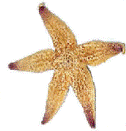Chemistry, Department of: Faculty Series

Hideaki Moriyama Publications
Document Type
Article
Date of this Version
2008
Abstract
Evidence from a number of vertebrate taxa suggests that modifications of hemoglobin (Hb) function may often play a key role in mediating an adaptive response to high altitude hypoxia. The respiratory functions of Hb are a product of the protein’s intrinsic O2-binding affinity and its interactions with allosteric effectors such as protons, chloride ions, CO2, and organic phosphates. Here we review several case studies involving high altitude vertebrates where it has been possible to identify specific mechanisms of Hb adaptation to hypoxia. In addition to comparative studies of Hbs from diverse animal species, functional studies of human Hb mutants also suggest that there is ample scope for evolutionary adjustments in Hb–O2 affinity through alterations of the equilibrium constants of O2 binding to deoxy- and oxyHb or through changes in the allosteric equilibrium constants for the transition between the deoxy- and oxyHb quaternary structures. It may be the case that certain evolutionary paths are followed more often than others simply because they are subject to less stringent pleiotropic constraints.


Comments
Published in High Altitude Medicine & Biology (2008) 9(2), p. 148-157. DOI: 10.1089/ham.2007.1079. Copyright © Mary Ann Liebert, Inc.. Used by Permission.